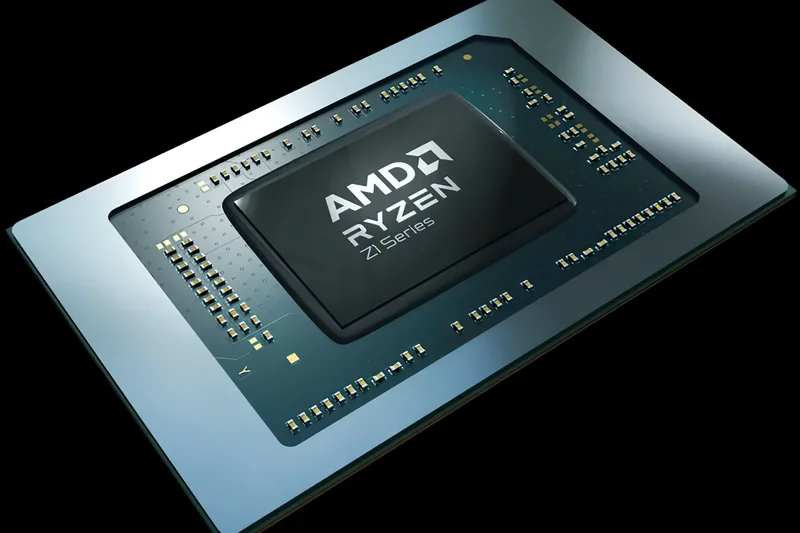AMD's AI Moonshot: Can It Actually Reach a $1 Trillion Market Cap?
The $1 Trillion Question
AMD's latest Analyst Day painted a rosy picture: $100 billion in annual revenue by 2030, gross margins nearing 60%, and a significant slice of the burgeoning AI compute market. CEO Lisa Su framed it as a multi-year uptrend. Wall Street initially lapped it up, some analysts even suggesting AMD is poised to challenge Nvidia's AI chip dominance. But let's pump the brakes for a second. Can AMD really pull this off?
Seaport analyst Jay Goldberg offered a more tempered perspective, pointing out that the $100 billion revenue target, while ambitious, only translates to a 10% share of the projected $1 trillion TAM (total addressable market) for silicon in 2030. "More than they have now, but not quite inspirational," he noted. And that's the crux of it: aspiration versus cold, hard numbers.
The other nagging detail? Customer concentration. AMD's near-term outlook relies heavily on OpenAI. Now, OpenAI's a big player, no doubt. But where's OpenAI getting all that cash? And how will they allocate their chip demand across multiple lines? It’s a valid concern, and one that isn’t really addressed in the initial hype.
Parsing the Projections
AMD is touting the role of CPUs in AI data centers. Okay, fine. But Goldberg strips that out, and suddenly AMD's GPU and AI accelerator market share sits in the mid-single digits. AMD, to their credit, doesn't typically exaggerate. But these figures, as Goldberg puts it, aren't exactly "exciting."
Then there's the Saudi AI data-center joint venture with Cisco and HUMAIN. The aim is to deploy up to 1 gigawatt of AI infrastructure by 2030, starting with a 100-megawatt phase in Saudi Arabia using AMD Instinct MI450-series GPUs and Cisco networking. The first customer? Generative video startup Luma AI, contracting the entire initial 100-MW cluster. AMD Stock Today (Nov. 19, 2025): Shares react to Saudi AI joint venture with Cisco & HUMAIN and new MI430X accelerator at SC25
This all sounds impressive. A gigawatt! But let's translate that into something tangible. A single high-end AI server draws, what, 5-10 kilowatts? So, 100 megawatts gets you maybe 10,000-20,000 servers. Is that a lot? Yes. Is it "one-tenth of a trillion-dollar market" a lot? Not really.
And here's where my analyst brain starts to itch. The deal is supposed to use renewable energy. Great PR! But what's the actual cost of that renewable energy, and how does it impact the overall economics of the data center? I've looked at hundreds of these infrastructure deals, and the "renewable energy" component often hides some very creative accounting. It's not a red flag, but it warrants closer scrutiny.

The MI430X Factor
AMD also unveiled the Instinct MI430X accelerator at Supercomputing 2025 (SC25). Next-gen CDNA architecture, 432GB of HBM4, 19.6TB/s of memory bandwidth. Impressive specs, aimed at large-scale AI and double-precision HPC. Deployments powering "Discovery" at Oak Ridge National Laboratory and Alice Recoque in Europe are being touted.
Supermicro is also adding air-cooled AI systems featuring AMD Instinct MI355X GPUs. More options for customers who prefer air over liquid cooling. This is good. It broadens the appeal.
But here’s a thought leap: How are these benchmarks actually being measured? Are they running the same models as Nvidia? Are they optimizing for different metrics? Until we get independent, apples-to-apples comparisons, take all performance claims with a massive grain of salt.
The market clearly wants AMD to succeed. Nvidia's Q4 revenue outlook lifted AI peers, including AMD, in extended trading. A rising tide lifts all boats, sure, but it also sharpens performance comparisons. Stocks making the biggest moves after hours: Nvidia, Palo Alto Networks, Oddity Tech, AMD and more
The Hype Train Needs Brakes
AMD stock traded around $223.55 recently, down ~3% on the day, before a modest after-hours rebound. Intraday, it ranged between $219.75 and $235.27 on heavy volume. That volatility tells a story: the market is uncertain.
And a recent Form 144 filing showed a senior AMD executive put in place a 10b5-1 plan to sell up to 19,450 shares. Now, these plans are common, and it doesn't guarantee execution. But it's a data point. A small one, but a data point nonetheless.
The $1 Trillion Market Cap is Still a Long Shot
Can AMD reach a $1 trillion market cap? Maybe. But the path is littered with potential pitfalls. Over-reliance on a single customer, ambitious but not necessarily inspirational market share targets, and the ever-present need to execute flawlessly on a complex technology roadmap.
Show Me The Money (And The Market Share)
The technology is there, but the numbers still need to show that AMD can truly grab a significant piece of the AI pie.
